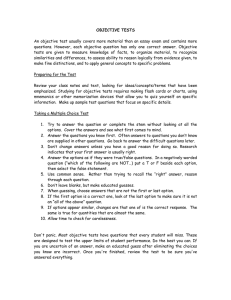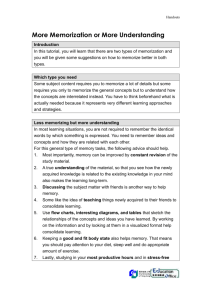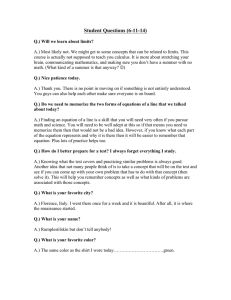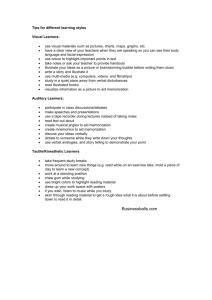Memorization Excercises
advertisement
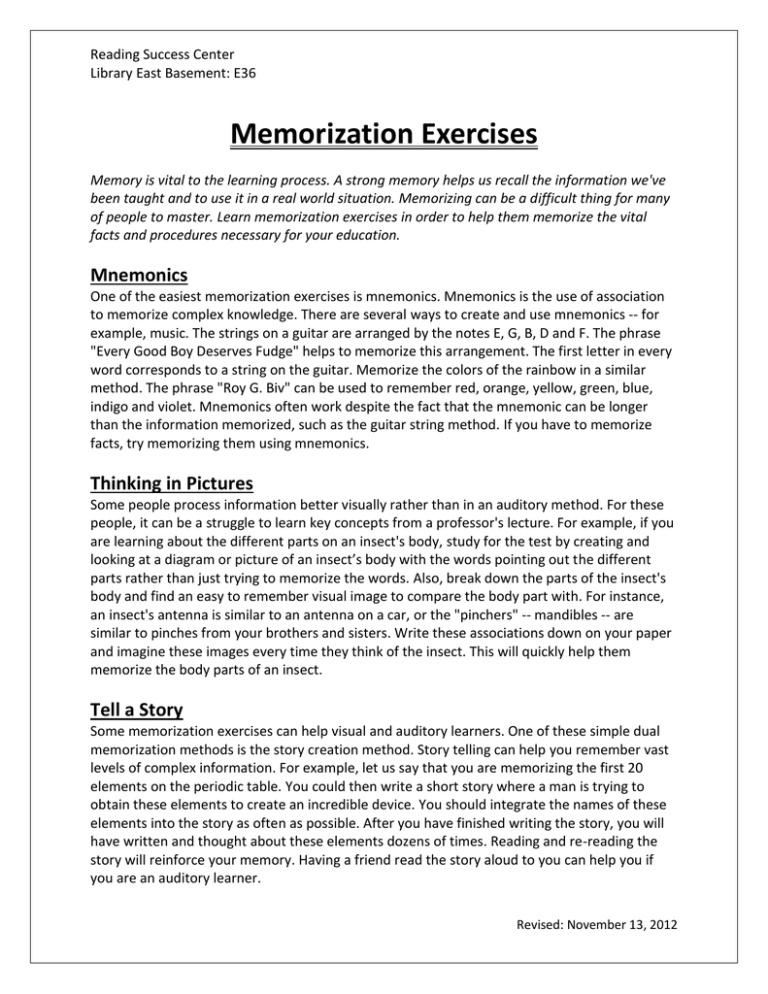
Reading Success Center Library East Basement: E36 Memorization Exercises Memory is vital to the learning process. A strong memory helps us recall the information we've been taught and to use it in a real world situation. Memorizing can be a difficult thing for many of people to master. Learn memorization exercises in order to help them memorize the vital facts and procedures necessary for your education. Mnemonics One of the easiest memorization exercises is mnemonics. Mnemonics is the use of association to memorize complex knowledge. There are several ways to create and use mnemonics -- for example, music. The strings on a guitar are arranged by the notes E, G, B, D and F. The phrase "Every Good Boy Deserves Fudge" helps to memorize this arrangement. The first letter in every word corresponds to a string on the guitar. Memorize the colors of the rainbow in a similar method. The phrase "Roy G. Biv" can be used to remember red, orange, yellow, green, blue, indigo and violet. Mnemonics often work despite the fact that the mnemonic can be longer than the information memorized, such as the guitar string method. If you have to memorize facts, try memorizing them using mnemonics. Thinking in Pictures Some people process information better visually rather than in an auditory method. For these people, it can be a struggle to learn key concepts from a professor's lecture. For example, if you are learning about the different parts on an insect's body, study for the test by creating and looking at a diagram or picture of an insect’s body with the words pointing out the different parts rather than just trying to memorize the words. Also, break down the parts of the insect's body and find an easy to remember visual image to compare the body part with. For instance, an insect's antenna is similar to an antenna on a car, or the "pinchers" -- mandibles -- are similar to pinches from your brothers and sisters. Write these associations down on your paper and imagine these images every time they think of the insect. This will quickly help them memorize the body parts of an insect. Tell a Story Some memorization exercises can help visual and auditory learners. One of these simple dual memorization methods is the story creation method. Story telling can help you remember vast levels of complex information. For example, let us say that you are memorizing the first 20 elements on the periodic table. You could then write a short story where a man is trying to obtain these elements to create an incredible device. You should integrate the names of these elements into the story as often as possible. After you have finished writing the story, you will have written and thought about these elements dozens of times. Reading and re-reading the story will reinforce your memory. Having a friend read the story aloud to you can help you if you are an auditory learner. Revised: November 13, 2012
